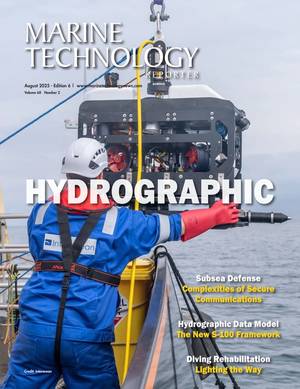Seismometers Retrieved for Slow-Slip Earthquake Study
A major three-year international scientific experiment to monitor slow slip earthquake activity at the Hikurangi subduction zone off the East Coast of New Zealand has concluded, with the retrieval of 52 ocean bottom seismometers using New Zealand’s Research Vessel Tangaroa.
Subduction zones are where one tectonic plate “dives” or subducts beneath another. These dangerous fault lines produce the world’s largest earthquakes and tsunamis, such as the 8.8 magnitude earthquake offshore Kamchatka earlier this year.
Beginning in late 2022, an international group of scientists from New Zealand, Japan, the United States, and Germany deployed a dense network of seafloor instruments offshore Gisborne to monitor both fast (seismic) and slow motion (lasting weeks to months) fault activity.
The instruments that have been retrieved over the last two weeks will enable detailed understanding of slow-slip events, a type of slow-motion earthquake that lasts days to months. These slow-slip earthquakes are crucial for understanding how stress builds up and is released along subduction zones and the relationship of slow-slip earthquakes to damaging seismic earthquakes.
Voyage leader Laura Wallace from GEOMAR in Germany says: “This deployment represents the largest multi-disciplinary experiment ever undertaken worldwide to probe offshore slow slip events, with more than 50 instruments in place on the seabed for three years.”
The large network of seafloor instruments captured two major slow slip earthquakes that took place offshore the North Island’s east coast in 2024 and 2025. 40 of the instruments are recording ocean bottom pressure to resolve centimeter-level vertical movement of the seabed during the slow-motion earthquakes — making it the densest and largest ever deployment of seafloor pressure sensors conducted globally.
The seafloor instruments have also recorded signals from distant seismic events, including tsunami waves generated by the recent M8.8 offshore Kamchatka subduction earthquake.
The Hikurangi plate boundary is located off the East Coast of the North Island, where the Pacific tectonic plate dives beneath the Australian plate—forming New Zealand’s largest and most hazardous earthquake and tsunami source. The Hikurangi subduction zone has received major attention from international earthquake scientists over the last 15 years, in part due to the close proximity of the plate boundary to New Zealand’s Geonet, Aotearoa New Zealand’s onshore monitoring network.
The success of this project sets the stage for a new phase of research, with another major deployment of instruments planned for November 2025—this time focusing on the Hawke’s Bay region, a different portion of the Hikurangi plate boundary where slow slip earthquakes are also observed.
Earth Sciences New Zealand, GEOMAR, University of Tokyo, Kyōto University, Tōhoku University, Lamont-Doherty Earth Observatory, and the University of Rhode Island are the research partners on this project. Scientific research funding for this project has come from New Zealand's Ministry for Business, Innovation and Employment, Germany’s Helmholtz Association, the United States National Science Foundation, and Japanese government science funding.

















 August 2025
August 2025



